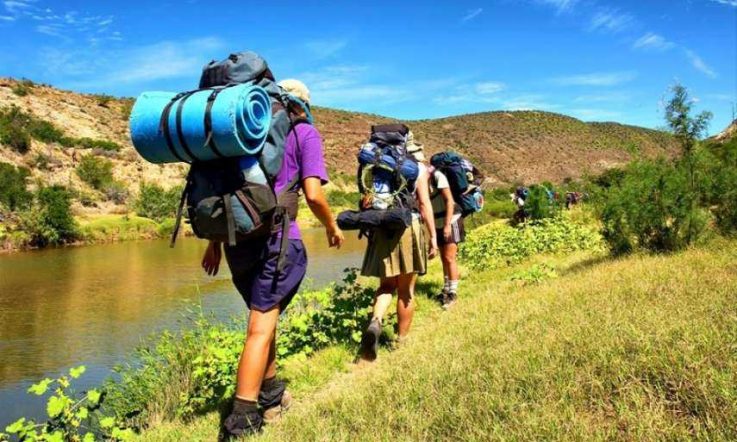The new Queensland Certificate of Education (QCE) heralds a significant change for Maths with the introduction of problem-solving and modelling assessment tasks which require students to respond in the form of a written report.
Two years ago, Nick Brooking, of Peace Lutheran College in Cairns, looked ahead to the new task genre and hypothesised that his students would be confident with 'the maths' aspect, but may struggle to compose the written report. ‘This suspicion was confirmed when I ran a trial task with my then-Year 9 class – now the current Year 11 students – who are the first to take these new [QCE] assessments,' Brooking, an educator with 13 years' experience here and in England, tells Teacher.
With a view to supporting students to feel more prepared, Brooking immediately introduced a non-assessed Problem-Solving and Modelling Task (PSMT) in Year 9 and two assessed practise tasks in Year 10. ‘I taught many of those Year 9 students the following year in Year 10 and developed an open-ended problem-solving and modelling task which students would need to respond to in a report format.'
'With minimal, but focused, input in how to communicate the formulation, solution and evaluation steps they had taken in solving the problem, their results and confidence improved markedly.'
In addition, Brooking set about conducting action research to examine the effect of introducing maths problem-solving and modelling report writing tasks prior to Year 11.
'These same students have now completed their first PSMT in Year 11, and the results of this programme not only confirm that it had a positive effect on their results, but also support our decision as a department to implement this programme … down throughout the middle school,' says Brooking, who coordinates Mathematical Methods and Specialist Maths at the K-12 school.
'The impact was an average grade improvement from low-C to mid-B, and hugely increased confidence. A typical comment from one of our usually maths-anxious students was: “Hold on, I can do this!”'
Accessible examples
Peace Lutheran College is a boarding and day school with an enrolment of 670 and whose student population is 10 per cent Aboriginal and Torres Strait Islander people and 30 per cent students for whom English is not their first language.
In addition to working in schools, Brooking has also worked with a range of universities in teacher training, with the Queensland Curriculum and Assessment Authority (QCAA) in the moderation of student work and assessment packages, and developed resources for the Triple Physics Network in England.
He developed the initial trial tasks for Peace Lutheran College based on ideas gleaned from discussions with other Maths teachers, the International Mathematical Modelling Challenge (IMMC) and the Estimate 180 website.
Then, as a department, staff developed further tasks for other year groups from similar sources and from materials provided by James Cook University in order to ensure a local, accessible context for our students.
'Indeed, a task we adapted from them involved choosing and justifying which crab pot to buy has been a big hit, particularly with our Indigenous students and with some of the weaker students as well, some of those who are less confident because they can say, "Yeah, I do this all the time''.'
‘And then they get the big confidence boost that they are coming up with ideas that the other kids haven't thought of, and that I definitely haven't thought of.
‘It's all about getting them to write these reports, because it's that report genre that they are finding very challenging. From an outside view, looking at the maths of it, they're fine.'
Brooking adds that having relatable, real-world tasks is particularly helpful when the students come to write their reports. 'It makes it much easier for them to write about and consider their assumptions and evaluate their ideas and verify them if they are latching on to something they have an understanding of, or they can at least develop an understanding of.'
Big Feed of Mud Crabs Task (Year 9)
Catching mud crabs, red claw, yabbies and other shell fish is popular in Far North Queensland. There are a range of traps (called ‘crab pots') that people use. David decides to take his son Daley out crabbing on the Barron River.
David's old crab pots are too old and torn to use so he and Daley head to a Bransford's Tackle to buy a new one. They see two common crab pots and they also notice an old roll of crab pot wire on sale. They want the chance to catch the most crabs possible for their family to have a big feed.
It is your task to recommend to them a good crab pot that would 'catch them a big feed of mud crabs'.
New Bridge for Cairns Task (Year 10)
There have been many proposals to develop the East Trinity area of Cairns, but transport infrastructure has always been a stumbling point. A bridge has been designed to cross a narrow section of the Trinity Inlet. Ships up to a height of 38 m regularly pass through the inlet. The arch of the bridge will be a parabola across a narrow section of Trinity Inlet. The maximum clearance of the underside of the bridge at high tide will be 40.8 m.
Cairns Port Authority is concerned that there may not be enough space under the bridge for tall ships to pass.
You have been commissioned to determine the widest span of tall ship that could safely pass under the proposed bridge.
Formulate, Solve, Evaluate, Communicate
PSMT lessons at the college start with a hook or starter question related to the topic that the PSMT would assess. Then there is class discussion of the context of the task, introduction of the problem, small group brainstorming on whiteboards, then a class discussion focusing on the stages of the QCAA Problem Solving Flow Chart: Formulate, Solve, Evaluate, Communicate.
Discussions (individual, small group and whole class) are focused on the problem-solving and report construction processes, rather than the solutions themselves. Tasks are differentiated largely by the amount of scaffolding.
'The PSMTs for lower year levels guide students by having multiple parts for them to address which aide them in developing an overall solution. A writing frame can then help them bring these parts together in the desired report genre,' Brooking says.
'For students with specific needs, this scaffolding can be reintroduced with relative ease. However, we have found that having an accessible context and explicitly discussing assumptions, evaluating, formulating and communicating has made these tasks very accessible.'
Formally, the students are learning and practising PSMT once in Year 7 (heavily scaffolded), twice in Year 8 (with slightly reduced scaffolding), once in Year 9 (with a further reduction in scaffolding), and twice in Year 10 (with a greater reduction, again, in scaffolding and with higher expectations).
However, Brooking says informally the students practise far more often. 'Every time we are problem-solving, we are asking students what they are assuming, why are they doing that step, is that the answer they expect and how would they explain what they are doing.'
Nick Brooking says having relatable, real-world tasks is particularly helpful when the students come to write their reports. Think about an upcoming topic you’re teaching. How can you incorporate classroom activities that reflect real-life situations?
Staff at Peace Lutheran College worked with James Cook University to develop classroom tasks. What opportunities exist in your own community to connect with outside experts?



